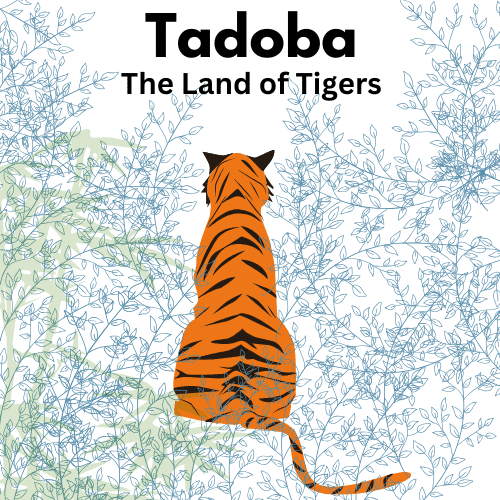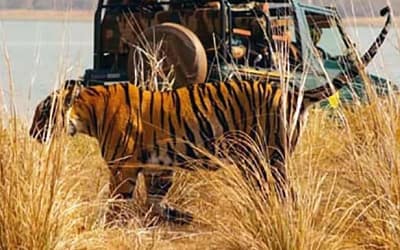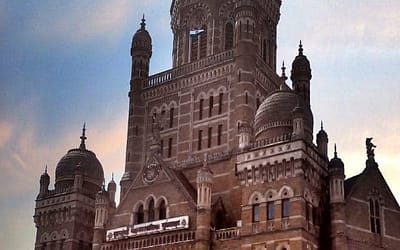Planning a Tadoba safari but not sure where to begin?
The Core is where the wilderness is at its purest; limited entries, intimate sightings, and raw beauty.
The Buffer is where the forest opens its arms; rich wildlife, vibrant landscapes, and more availability.
The best safaris often blend both for a richer, more balanced experience.
We’ll help you choose the right mix for your trip — book now before prime dates fill up!
Introduction to Tadoba Core vs Buffer Zone
Planning a Tadoba safari? Understanding the Core and Buffer helps you balance access, sightings, and responsibility. The Core protects habitat with strict limits. The Buffer supports corridors and communities while welcoming regulated tourism.
Quick take: choose the core if you want a more “untouched” vibe and can plan ahead; choose the buffer if you want easier permits, walk-in options at some gates, and broader lodge choices—while keeping strong tiger odds.
We’ll help you mix both for 3–4 drives to raise sighting probability without adding hassle.
Size and History of Tadoba–Andhari Tiger Reserve
Spread across ~1,727 km² in Maharashtra’s Chandrapur district, Tadoba is among India’s oldest protected forests (established 1955). Today, it anchors a thriving landscape for tigers, leopards, sloth bears, dholes, gaur, and rich birdlife.
What does Tadoba’s landscape look like?
Classic Central Indian wilderness: teak and bamboo forests, sunlit grasslands, and rocky outcrops interlaced with perennial waters like Tadoba Lake, Kolsa Lake, and the Andhari River. Dense thickets meet open spaces—great for both predators and prey.
What is the Core Zone?
The reserve’s inviolate heart—managed for habitat protection with capped vehicles and defined routes.
- Area: ~625.4 km² (Tadoba National Park ~116.6 km² + Andhari WLS ~508.8 km²)
- Villages: Remnant villages under phased relocation; no grazing or extraction
- Tourism access: Pre-booked safaris via six gates—Moharli, Kolara, Navegaon, Khutwanda, Zari, Pangdi
Entry gates and their distinct flavors
Historic gateway near Chandrapur; iconic lakes, lively lodge cluster.
Nagpur side; diverse terrain (meadows, bamboo, teak) and quieter feel.
Open meadows and scenic routes; loved by photographers and birders.
Moharli’s calmer cousin; similar habitat with fewer vehicles.
Rugged, remote—old Kolsa range vibes; great for offbeat explorers.
Low footfall, pristine ambience; intimate, unhurried drives.
Spotlight: Zari’s pristine calm
Contiguous forest with Pangdi, intentionally low vehicle numbers, and a tranquil mood that rewards patient tracking and photography.
Khutwanda vs Moharli
Same broader landscape; Khutwanda typically sees fewer jeeps. Expect classic Moharli-style habitats with a quieter rhythm.
Pangdi: the wild frontier
Undulating, remote, and old-growth character. Perfect if you prefer unscripted wilderness over busy circuits.
Navegaon: photographers’ friend
Wide vistas and meadows pull herbivores—and predators—into the open, especially in golden light.
Why Kolara captivates
Diversity in a single drive—meadows, bamboo, teak—plus the storied Pandharpauni belt. Quieter than Moharli on many days.
Moharli: Tadoba’s classic heartbeat
Iconic lakes, strong legacy of sightings, and good resort density for first-timers and families.
Can you stay overnight in Tadoba?
Yes—and you should. From forest rest houses to eco-lodges and homestays around core and buffer, stays add depth to your safari. Book early in peak season.
What is the Buffer Zone?
The transition landscape encircling the core where regulated human use and wildlife coexist.
- Extent: ~1,101.8 km² forest + ~401.5 km² non-forest
- Villages: Community participation via Eco-Development Committees (EDCs)
- Tourism access: ~16 gates (e.g., Agarzari, Devada–Adegaon, Junona, Madnapur, Sirkada, Palasgaon, Belara, Alizanza); some allow walk-in bookings
Why some buffer gates are more popular
- Active corridors: Waterholes + territory overlaps = consistent movement
- Diverse terrain: Bamboo, teak, meadows, marsh—great for photos and sightings
- Access: Shorter transfers and simpler permits help spontaneous drives
- Word of mouth: Gates with repeated good sightings trend fast
The permit crunch: why early planning matters
Hot gates reach quota quickly—especially around holidays. If you’re eyeing marquee buffers in peak season, secure permits the day booking windows open. We’ll track advisories and hold priority slots.
Madnapur (Kolara Churadeo)
Cool bamboo thickets, quiet glades, and frequent signs of big cat movement—great for unhurried drives.
Sirkada
Shade, seasonal water, and regular family activity in drier months—good chances for prolonged behavior watching.
Palasgaon
Open meadows and easy access; leopards, bears at dusk, and dholes on the move. Handy fallback when cores are full.
Belara
Winding bamboo lanes, secluded waterholes, and a calm vibe—ideal for those who like fewer vehicles.
Alizanza
Northern corridor linking neighboring blocks. Mixed terrain; dynamic, fast-paced drives when movement spikes.
Navegaon cluster (Ramdegi–Nimdhela)
Streams, meadows, and bamboo corridors—rich overlap of predators and prey with scenic frames.
Pangdi–Zari buffers
Older, quieter forests (Pangdi Aswal Chuha, Keslaghat, Zari Peth, Somnath). Feel off-grid yet connected to core movement.
Which buffer zones offer the best wildlife? (smart way to choose)
- Check recent movement: Ask for the latest around water sources, especially in summer.
- Balance vibe and access: Moharli-side buffers are productive but busier; Kolara-side often feels calmer.
- Go with seasoned naturalists: Local context turns alarm calls and pugmarks into sightings.
How buffer landscapes contrast and complement each other
From Madnapur’s bamboo to Palasgaon’s open fields and the rugged Pangdi–Zari stretch, each gate offers a distinct mix of cover, water, and visibility—useful for tailoring drives to your goals (photography, family comfort, or pure exploration).
How local communities shape ecotourism
Eco-Development Committees (EDCs) guide community-led tourism: trained local guides and drivers, revenue sharing into village projects, homestays and crafts that reduce pressure on forests. It’s a safari that uplifts people and keeps Tadoba wild.
Wildlife wonders beyond tigers
Leopards, sloth bears, dholes, gaur, crocs, plus rich birdlife (200+ species) and 70+ butterflies. The mosaic of teak, bamboo, and wetlands keeps the cast changing by season.
When to visit for peak encounters
- Late Mar–early Jun: top sighting window—thin foliage, waterhole focus; best done with early morning and late afternoon drives
- Monsoon (Jul–Sep): core usually closed; many buffer gates operate with advisories—lush scenery, birding, slower travel
- Oct–Feb: comfortable weather and balanced sightings—ideal for families
5 key differences at a glance
Aspect |
Core Zone |
Buffer Zone |
|---|---|---|
Size |
~625 km² |
~1,503 km² (≈1,101.8 forest + ≈401.5 non-forest) |
Villages |
Remnant villages under relocation |
Multiple villages engaged via EDCs |
Grazing & forestry |
Prohibited |
Regulated non-timber collection and limited use |
Tourism gates |
6 gates; advance booking only |
~16 gates; select walk-in options |
Primary focus |
Inviolate habitat & monitoring |
Community partnership & connectivity |
Rules and quotas change by season—share your dates and we’ll confirm the latest advisories.
FAQs
Is tiger sighting better in the core than the buffer?
Both deliver. It depends on season, water, and current territories. Plan 3–4 drives and we’ll align gates to live movement.
Can I book last-minute?
Core permits sell fast. Some buffer gates allow on-the-spot bookings. We’ll advise based on your dates.
Do buffer safaris feel “lesser”?
No. They’re different—more flexible and often lively around water sources. Many memorable sightings happen in the buffer.
Plan with Incredible Tadoba
Private, custom Tadoba safaris—done right
We secure prime permits, select the right lodge, provide a private 4×4 Gypsy with a senior naturalist, and arrange smooth chauffeured transfers. Real conversations, not automated templates.
· ·




